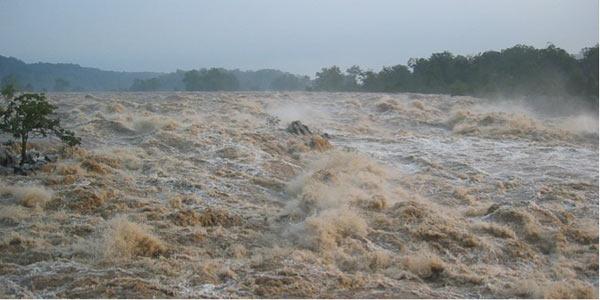Experts have long linked deforestation and intensive farming to worsening erosion rates around the world. Although studied extensively, determining erosion rates due to human-induced activities has rarely been quantified by scientists. However, new research conducted by geologists finds that erosion rates in the southeastern United States increased one hundred times after the arrival of European colonists in the 1700s due to tree clearing and unsustainable agriculture practices.
One of the researchers, Paul Biermann, a geologist from the University of Vermont, told mongabay.com that he has been studying erosion rates and landscape change ever since he came to Vermont and saw the dramatic human imprint on the landscape.
Bierman explained that there are two primary types of human activities that are responsible for increased soil erosion rates in the southeastern United States: “the removal of the trees and thus their root systems which stabilize the soil on slopes and the advent of tillage agriculture which loosens the soil and makes it susceptible to water and wind erosion.”
In order to determine the impact of human activities on erosion rates, geologists had to first establish background (geologic) rates of erosion. They conducted research at ten large river basins (10,000-100,000 square kilometers) in the southern Appalachian piedmont region from Virginia to Alabama. These ten river basins sites all had a history of large-scale native forest clearing and intensive agriculture use starting in the 1700s and experienced maximum land use in the late 1800s and early 1900s.
The scientists collected 24 sediment samples from the ten river basins and then used quartz in the sediment to extract a rare form of the element beryllium, an isotope called beryllium-10 (10Be). Formed by cosmic rays, the isotope10Be accumulates in the top layer of the soil. The greater the amount of beryllium-10 in the soil, the slower the rate of erosion since the soil is exposed at the Earth’s surface for a longer period of time.
“10be allows us to see back in time, beyond the human impact to the natural rates of landscape change,” Bierman said. “These provide a benchmark against which to compare modern rates.”
The team measured the amount of 10Be in their sediment samples in order to estimate the geologic erosion rates prior to human-induced activities on the land.
The study concluded that the landscape in these 10 river basins had hillslope erosion rates of around eight meters per million years (m/m.y before European settlement (pre-1700s) and around 950 meters per million years (m/m.y.) following peak disturbance in the early 1900s, representing an increase of one hundred times the natural rate. Furthermore, the research found that the sediment yield increased five to ten percent above pre-settlement levels and rivers were only carrying about six percent of the eroded soil downstream while leaving the remainder at the base of the hillslopes and valley bottoms.
Unfortunately, such increased erosion rates lead to an array of environmental and economic consequences.
According to Bierman, increased erosion rates can result “in gullying the landscape due to turbid waters and the transport of metals and nutrients attached to sediment particles.” In addition, the economic impacts include the “need for soil amendments such as fertilizer and the loss of land for use.”
Fortunately, erosion and sediment yields have stopped increasing in the areas surveyed by Bierman due to “the implementation of modern farming and soil conservation techniques including no-till, contour plowing, crop rotation, and cover crops has dramatically reduced erosion rates.”
From 1967 to 1972, the sediment deposition in the reservoirs surveyed declined to a basin-wide erosion rate of approximately10 meters per million years (m/m.y. ). Since this erosion rate is in line with the natural erosion rates estimated (i.e., as indicated by the 10Be results) for the area, it suggests that soil conservation practices are effective at reducing erosion.
Bierman said the study is important to policy maker because it “guides environmental policies and regulations with regards to soil conservation and land use planning.” Using the beryllium-10 erosion rates as a target for successful resource conservation strategies, Bierman states that “we have set a benchmark rate of erosion to which regulators can compare current rates of soil loss and this allows rationale evaluation of policies and regulations to see if they are capable of reducing modern erosion rates to those characteristic of the area being regulated.”
Citations:
- Reusser, Paul, Bierman, Paul and Rood, Dylan 2015. Quantifying human impacts on rates of erosion and sediment transport at a landscape scale. Geology published online; doi: 10.1130/G36272.1
This article was written by Alexander Montoro, a contributing writer for news.mongabay.com. This article was republished with permission, original article here.




Friends Read Free